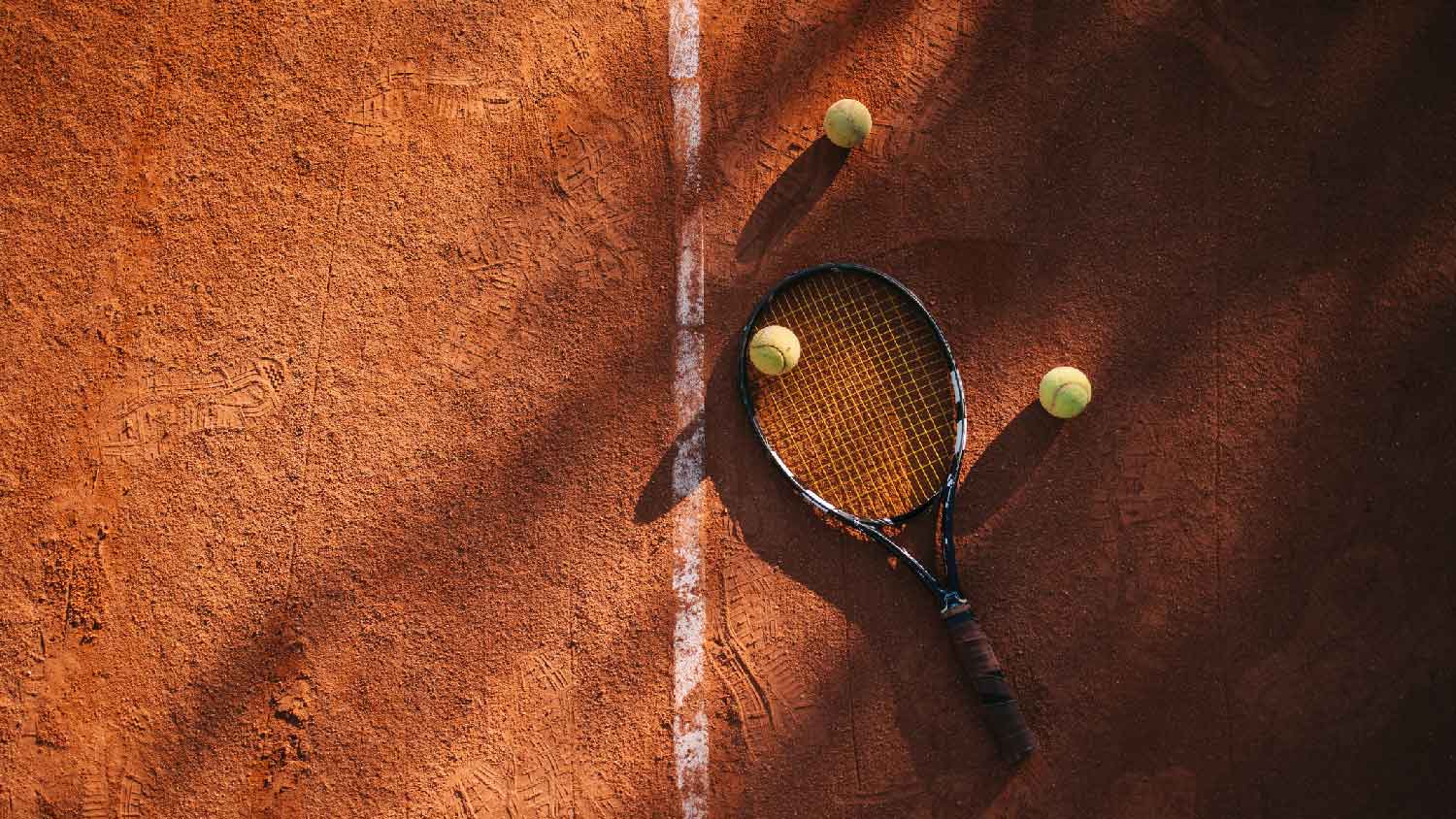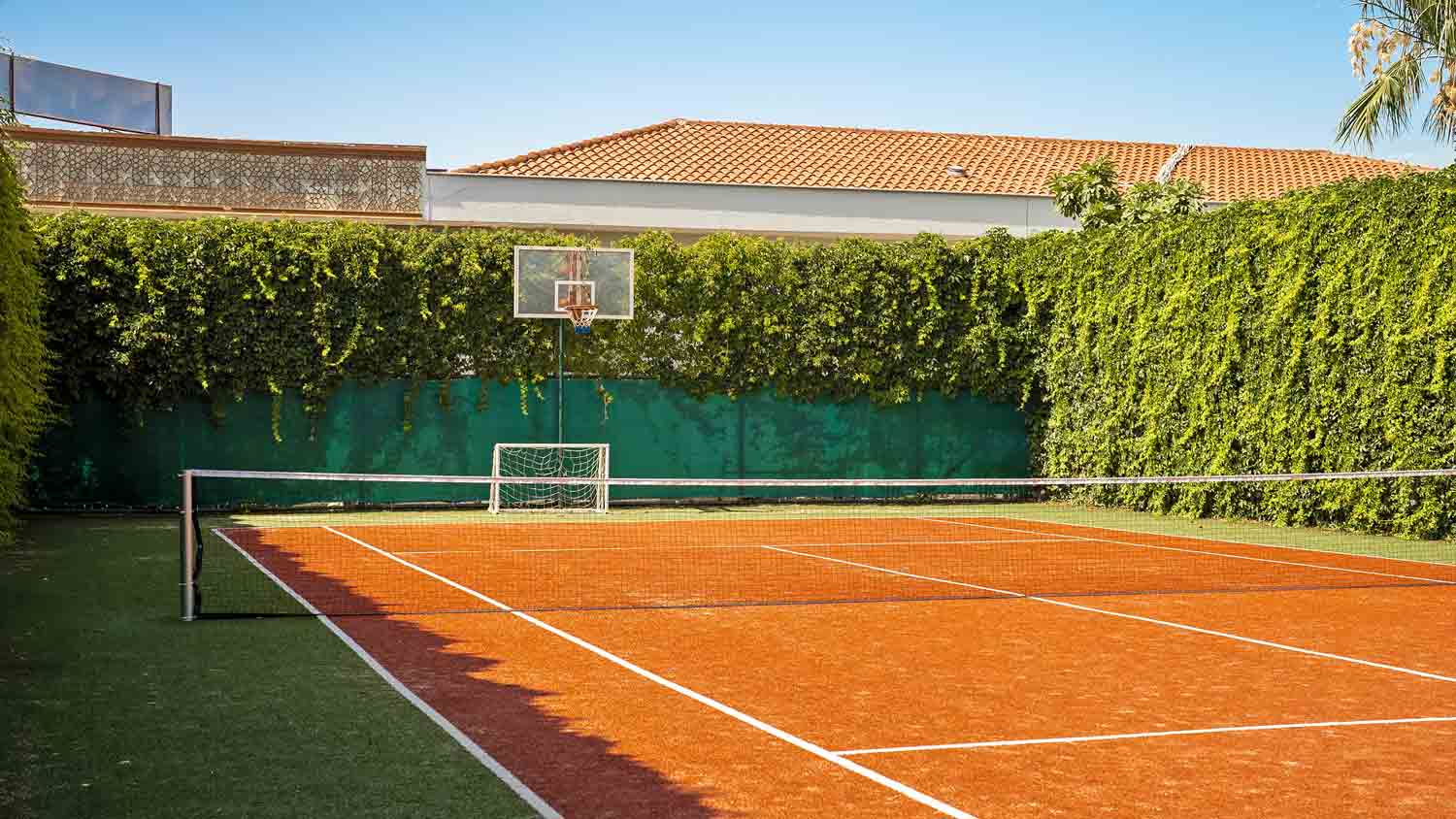
Discover the cost to resurface a tennis court, including average prices, key cost factors, and tips to help you budget for your court resurfacing project.
The average cost to build a tennis court ranges from $5,776 to $26,189, with most homeowners paying an average of $15,774. Cost factors include court size, surface material, site prep, and accessories.


How much it costs to build a tennis court depends on the surface material, site preparation, labor, and accessories like fencing and lighting.
Budget $5 to $14 per square foot for building your tennis court.
Professional installation costs 10% to 20% of the project’s total, and ensures the court is durable, safe, and playable for years to come.
Custom features such as lighting, fencing, and windscreens add to the overall price but also enhance usability.
Building a tennis court at your home can have a return on investment (ROI) of 30% to 50%.
This article was created using automation technology and thoroughly fact-checked and edited by an Angi Editor in accordance with our AI policy.
How much does it cost to build a tennis court? Most homeowners spend between $5,776 to $26,189, with an average of $15,774 for a standard-size court. Costs vary by surface type, site conditions, and features, with prices ranging from $5 to $14 per square foot.
Adding a tennis court to your property is a significant upgrade that boosts both recreation options and potential home value. In this guide, we’ll break down all the costs, factors, and choices to help you make a confident decision.
Building a tennis court involves more than just laying down a surface. The main cost components include surface material, site preparation, labor, accessories, and finishing touches. The total cost to build a tennis court depends on choices for each of these elements.
A backyard court may cost less than a regulation-size court, while half-size or compact courts offer significant savings. Unique site challenges, premium materials, and custom features will push costs toward the higher end.
Key elements that contribute to the price include excavation and grading (to prepare the site), base construction (for stability), surfacing (such as asphalt, clay, or acrylic), fencing, lighting, nets, and professional labor. Each of these steps plays a unique role in the court’s longevity, performance, and safety.
| Component | Description | Average Cost |
|---|---|---|
| Site preparation | Clearing, grading, and prepping the ground | $5,000–$15,000 |
| Surfacing | Asphalt, clay, grass, acrylic, or turf options | $2,500–$50,000 |
| Fencing | Perimeter fencing and gates | $5,000–$12,000 |
| Lighting | Court lights and electrical installation | $1,500–$6,000 |
| Accessories | Nets, posts, windscreens, benches, etc. | $1,500–$5,000 |
Court size has a major impact on the total cost to build a tennis court. Full-size doubles courts require more materials, labor, and land than half-size or mini courts.
Standard doubles courts measure 78 feet by 36 feet, while singles courts are slightly narrower at 78 feet by 27 feet. Mini or practice courts can be even smaller, offering affordability and flexibility for limited spaces. The cost per square foot for a tennis court falls between $5 and $14, depending on surface material and features.
| Court Type | Dimensions (Ft.) | Description | Average Cost |
|---|---|---|---|
| Doubles court | 78x36 | Full-size, competitive play | $14,000–$39,300 |
| Singles court | 78x27 | Standard singles, less width | $10,500–$29,500 |
| Half-size court | 39x18 | Practice or compact spaces | $3,500–$9,800 |
| Mini/youth court | 36x18 | Children’s or training use | $3,240–$9,000 |
Multiple professionals play a role in building a tennis court. The main pro is a general contractor who oversees the entire project and ensures quality standards. General contractor rates for tennis court installation range from 10% to 20% of the project total, depending on region and expertise. A general contractor manages site assessment, grading, base installation, surfacing, and finishing.
Depending on your property and project goals, you may need to hire additional professionals:
Landscape architect: $70 to $150 per hour for planning, integrating the court with your yard, and recommending plantings or hardscape.
Land surveyor: $400 to $800 for land surveying and verifying property lines before construction.
Electrician: $50 to $130 per hour for wiring court lights, outlets, or security features.
Where you live has a direct impact on how much it costs to build a tennis court. Urban areas and regions with a high cost of living tend to have higher labor and material costs. Rural locations may offer savings, but transportation and site access can add to expenses. Climate also matters—regions with heavy rainfall or freeze-thaw cycles may require extra drainage or more durable surfaces.
For example, building a tennis court in California or New York often costs more than in the Midwest or South. Material availability, contractor rates, and permitting fees all contribute to these regional differences.
In addition to the basics, several other factors can influence the final price of building a tennis court. Taxes, insurance, and warranties can add to your total investment, especially for high-value projects. Optional features such as seating, storage sheds, or custom windscreens will increase costs.
Accessibility and site difficulty, such as steep slopes, rocky soil, or drainage challenges, require extra labor and materials. Repairs to existing structures or post-construction cleanup may also add to your expenses.
Before construction, you may need to clear land, remove trees, or demolish existing structures. Site clearing costs between $1,000 and $4,000, while tree removal costs range from $200 to $2,000 per tree. Grading and soil stabilization often add another $1,000 to $10,000, especially on sloped or unstable land. Poor soil conditions or high water tables can require special drainage solutions, further increasing prep costs.
Most areas require permits for building a tennis court, including zoning, construction, and sometimes environmental permits. Responsibility for obtaining permits depends on your agreement with the contractor—some handle it for you, while others expect the homeowner to manage approvals.
Permit costs range from $200 to $2,000, depending on your location and project complexity. The process can take anywhere from two weeks to several months, so it’s important to start early and confirm all requirements with your local building department.
Some homeowners consider building a tennis court themselves to save money. While a DIY project can reduce labor costs, it requires specialized skills, equipment, and a significant time commitment. Materials alone can cost $10,000 to $50,000, with additional expenses for renting heavy machinery and purchasing tools.
DIYers can handle tasks like clearing land or installing basic accessories, but professional installation is recommended for grading, base construction, and surfacing. Risks of DIY include uneven surfaces, drainage problems, and reduced durability—issues that can lead to costly repairs or safety hazards. A professional build typically takes four to eight weeks, while a DIY project may stretch much longer due to learning curves and scheduling.
It’s best to hire a professional if you want a long-lasting, high-quality court or if your site presents significant challenges.
Renovating a tennis court involves resurfacing, repainting lines, replacing nets or fencing, and fixing minor wear and tear. These projects cost $3,000 to $20,000, depending on the extent of work and materials used.
Remodeling, on the other hand, means making major changes such as altering court size, upgrading the surface material, or adding new features like lighting, seating, or drainage systems. Remodels can cost $20,000 to $60,000 or more, especially if significant demolition or new construction is required.
Consider the court’s age, condition, and your long-term goals when choosing between renovation and a full remodel. Renovations are ideal for courts with a solid foundation and only cosmetic or minor functional issues. Full remodels are best for outdated, damaged, or poorly designed courts needing substantial upgrades.
Consider these cost-saving strategies to make your tennis court installation more budget-friendly:
Choose cost-effective surface materials such as asphalt or post-tensioned concrete.
Limit custom features or accessories to essentials.
Prepare the site yourself if you have the skills and equipment.
Get multiple quotes from local tennis court contractors to compare pricing.
Build during off-peak seasons when labor rates are lower.
Consider phased upgrades—add lighting or fencing later.
Use standard court dimensions to avoid custom costs.
Maintain the court regularly to avoid costly repairs.
Adding a tennis court can increase your property’s appeal and market value, especially in upscale neighborhoods or areas where recreational amenities are in demand. While the return on investment (ROI) for tennis courts is typically lower than for pools, a well-built court can recoup 30% to 50% of its construction costs and set your property apart from others.
Factors influencing value include court quality, location, neighborhood demand, and ongoing maintenance. Courts in excellent condition attract buyers, while neglected or poorly built courts may deter them. Compare the potential ROI to other upgrades like pools or basketball courts, and consider your area’s buyer preferences before investing.
Home is the most important place on earth, which is why Angi has helped more than 150 million homeowners transform their houses into homes they adore. To help homeowners with their next project, Angi provides readers with the most accurate cost data and upholds strict editorial standards. We extensively research project costs to develop the pricing data you see, so you can make the best decisions for you and your home. We rely on reputable sources, including the U.S. Bureau of Labor Statistics, academic journals, market studies, and interviews with industry experts—all to ensure our prices reflect real-world projects.
Want to help us improve our cost data? Send us a recent project quote to [email protected]. Quotes and personal information will not be shared publicly.
From average costs to expert advice, get all the answers you need to get your job done.

Discover the cost to resurface a tennis court, including average prices, key cost factors, and tips to help you budget for your court resurfacing project.

Ready to step up your game? Use this indoor basketball court cost guide to get an idea of how much your project will cost based on size, materials, and more.

Discover how much it costs to build a pickleball court, including average prices, key cost factors, and tips to help you plan your project with confidence.

Debating between a pickleball court or a tennis court? Use this guide to learn all about the difference in sizes between these two courts and compare them based on factors like maintenance and longevity.

Installing or resurfacing a tennis or game court is a big investment. Follow these residential tennis court questions to help you talk with a contractor.

A tennis court’s size significantly affects gameplay. Use this guide to learn how to size your tennis court based on factors like space available and regulation requirements.